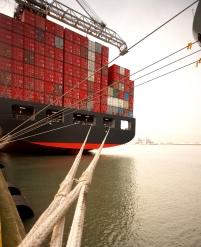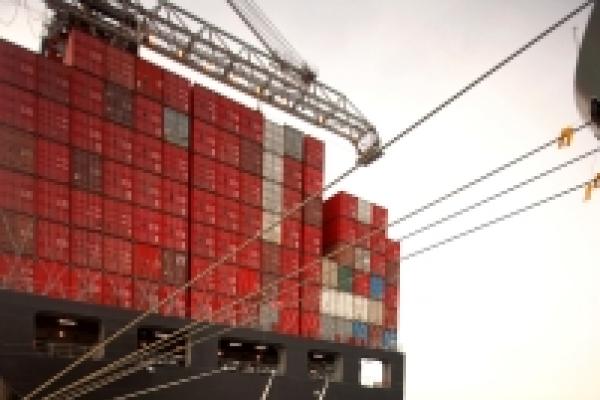
Steamship Mutual
Published: February 01, 2010

In Novologistics Sarl v Five Ocean Corporation (the "Merida"), which was on appeal from an arbitration decided on documents alone, the English High Court provided helpful guidance in determining when a voyage charterparty, in this case incorporating both safe berth and safe port provisions, is a berth or port charter.
The “Merida” was voyage chartered for the carriage of a part cargo of steel plates from Xingang to Cadiz and Bilbao. The vessel arrived at the loadport at 04.00 on 10 March 2007 and tendered a Notice of Readiness. On 30 March the vessel was alongside and loading commenced.
The charterparty included inter alia the following provisions:
“one good and safe chrts’ berth terminal 4 stevedores Xingang to one good and safe berth Cadiz and one good and safe berth Bilbao”
[referred to as the “Opening Term”]
Clause 2
[1] The vessel to load at one good and safe port/one good and safe charterers’ berths Xingang and to discharge at one good and safe port/one good and safe charterers’ berth Cadiz and at one good and safe port/one good and safe charterers’ berth Bilbao.
[2] Shifting from anchorage/warping along the berth at port of loading and at port of discharge to be for owners’ account, while all time used to count as lay time.
Owners contended that the charter was a port charterparty, hence after arriving at Xingang and tendering NOR the charterers had agreed to accept the risk that if congestion occurred any delay waiting for berth was for their account. As such, owners claimed demurrage in the amount of US$502,267.24.
On the other hand charterers contended that the charter was a berth charterparty so that NOR could not be tendered until the vessel had actually berthed.
The initial dispute before the arbitrators dealt with the issue of whether the vessel was an arrived ship for the purpose of calculating laytime and whether owners were entitled to claim demurrage on the basis that the charter was a port charterparty. The arbitrators focused on Clause 2 and decided that the intention of 2[1] was to qualify the wording in the Opening Term in that it provided for a port charter. They also concluded that it must be a port charter considering the language of 2[2] which provided that shifting time from anchorage to the berth was to count as laytime. With this in mind, they too held the view that the Master had the ability to tender a valid NOR upon arrival, as in fact happened. Thus, the charter was a port charterparty and owners’ claim for demurrage succeeded.
The charterers appealed the decision, and argued that the arbitrators had interpreted 2[2] the wrongly as the language of the clause was apt for a berth charter or, if that interpretation was wrong, the clause was neutral. Charterers also argued that the Opening Term, which defined the contractual destination, stands alone and should prevail over 2[1] to the extent there were inconsistencies.
Mr Justice Gross considered the submissions by both parties and in reaching his decision he considered various authorities[1] which looked at the language and construction of the contractual destination of the charter. Firstly Gross J considered the judgment of Lord Diplock in E.L. Oldendorff v Tradax Export (The Johanna Oldendorff) [1974]AC 479 dealing specifically with the “adventure contemplated by a voyage charter” identifying the four successive stages of a voyage charter and, in particular, that the place of arrival at the discharge port is “the point both geographically, and in time, when the voyage stages end and the loading / discharging operation begins” (Schofield – Laytime and Demurrage (5th Ed). Applying this logic to The "Merida" the reference to Xingang in the Opening Term did not mean that the port was the specified contractual destination. The exact wording was “good and safe chtrs’ berth… Xingang” so, upon a proper construction, it meant the charterers had the express right to nominate the berth at Xingang.
On this basis alone, the decision was that this was a berth charterparty. However, prior to passing judgment, Clause 2 needed consideration.
Gross J disagreed with the arbitrators’ interpretation of 2[1] because if they were right, it would deprive the Opening Term of any meaning or purpose and would fundamentally alter the intended voyage. It would have been odd if owners intended to convert the charter to a port charter when the language of the Opening Term clearly provided that the voyage charter commences at the “chtrs’ berth” – a berth charter. Indeed his view, which ultimately serves as helpful guidance in future situations, was that in fact there were no inconsistencies and that 2 [1] only introduced a safe port warranty and reiterated the safe berth warranty within the Opening Term.
The arbitrators interpretation of 2[2] was also rejected. The court decided the effect of the clause was neutral. It only served to identify the party responsible for the cost/time in shifting and warping.
Accordingly the court allowed the charterers’ appeal and held that the owners’ claim for demurrage must fail.
The question as to whether or not the port or the berth was safe was not an issue. The case turned on whether laytime commenced upon arrival at the port taking into consideration what appeared to be, at first blush, inconsistencies. Care must be taken not to confuse the safe berth/port warranty for the contractual destination where laytime starts to count. The decision in this case has provided helpful guidance for both owners and charterers in determining whether a charter is a berth or port charter.
[1] Stag Line v Board of Trade (1950) 83 LI. L Rep. 356; North River Freighters Ltd v President of India (The Radnor) [1955] 2 Lloyd’s Rep 668;The Finix [1975] 2 Lloyd’s Rep 415 & The Puerto Rocca [1978] 1 Lloyd’s Rep 252


